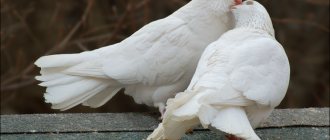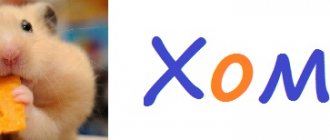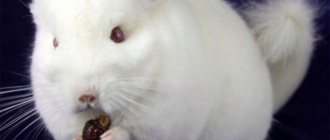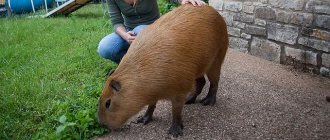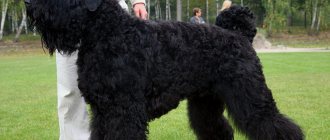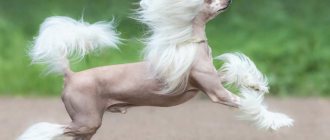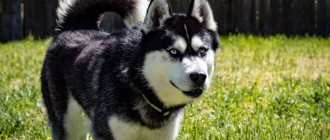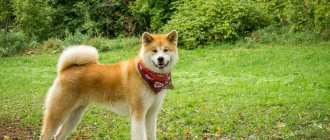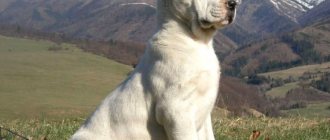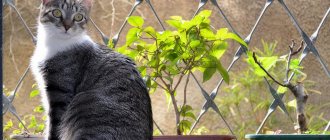The first evidence of pigeons dates back to Ancient Egypt, around 4000 BC. At that time there were only rock and rock pigeons, and only later did people begin to breed various species of these birds. Today there are about 280 of them. Among them, the most famous are wild, meat, postal and ornamental.
This article will tell you about the breeds of pigeons with photographs and names of species.
Bird of peace
It was not for nothing that the dove was called the bird of peace. After the end of the Second World War, representatives of the world from the Congress of the World Organization depicted on their emblem a dove holding an olive branch in its beak. The author is the famous artist P. Picasso. But it became a symbol of fidelity and purity long before this event.
According to the great ancient Greek healer Hippocrates, the gallbladder is the cause of anger and grumpiness. So, the pigeon does not have this organ, so it is considered a peace-loving bird.
The dove that brought an olive branch to Noah's feet informed him of the end of the Great Flood. Capable of returning to where they grew up. The ancient Egyptians were the first to recognize this ability in them. Since then, they have become feathered “postmen” who fly long distances and can go without food and water for several days.
Everything about the pigeon family and their role in the history of mankind can be listed an endless number of times. And it just so happened that the role of the symbol of peace, love and devotion was given to the white dove, and not to the sparrow or crow.
Natural habitats
Pigeons live on almost all continents, with the exception of the North and South Poles. These birds inhabit various terrestrial biotopes, from dense forests to deserts, as well as mountainous areas at altitudes of up to 5 thousand meters, including in areas where humans operate. About 60 percent of pigeon species inhabit islands and are not found on mainlands.
There are 9 species of similar birds found on the territory of Russia, and the largest number of currently existing species live in South America and Australia.
Sharp-crested (stone)
A distinctive feature of the breed is the presence of a tuft on the head. The bird is found in the arid regions of Australia. The color of their plumage camouflages them well as scorched earth; they feel quite comfortable even among stones. They feed on seeds, which they obtain for themselves during the hot part of the day, while the hunters behind their heads are hiding from the heat. It is this feature that speaks of their endurance.
Egg laying, usually 2 in number, begins at the end of the rainy season (September–October). The chicks are incubated by both parents and hatch after 16-17 days. After a week, they are able to leave the nest on their own.
Reproduction, lifespan
The reproduction of these birds depends on egg laying. If pigeons are kept at home, then the laying of eggs can be predicted by the behavior of the female. A couple of days before this, she becomes inactive and often sits in the nest. The process of laying eggs occurs a couple of weeks after fertilization.
A pair of pigeons builds a nest for themselves, and the male finds and brings the necessary building material, and the female forms a nest from it. In their natural habitat, these birds live for about 5 years, since they have many different enemies. If you keep pigeons at home, providing them with suitable conditions, then pigeons can live 3 or even 5 times longer.
Pink-headed (variegated)
The body length reaches 23 centimeters; the name comes from the characteristic coloring of the head. It is painted in bright pink tones, and the back of the head is green. The middle of the chest is also pink. The female's plumage is a little duller. The young are not pink in color.
They feed exclusively on berries. A clutch of one egg, hatched by both parents. Hatching period is at least 1.5 weeks. Found exclusively in southeast Asia.
Enemies in nature
In natural conditions, pigeons have plenty of enemies. First of all, these are other feathered predators that attack them right in the air: falcon, eagle,
hawk, kite and some other birds. On the ground, terrestrial predators are waiting for them: martens, ferrets, foxes and, of course, ordinary domestic cats.
fan crowned
The bird is large in size, body length is 74 centimeters and weighs 2.5 kilograms. A distinctive feature of the breed is a beautiful fan-shaped crest on the head made of loose feathers, the tips of which end in black and white triangles.
The bird is distinguished not only by its beautiful crest, but also by its bright blue color, less often lilac. The wings are long and rounded at the ends. The tail is elongated and wide. Found in New Guinea, closer to its northern part. It feeds on seeds, berries, and young leaves. A clutch of two eggs. The incubation period is 28 days. Both parents take care of the future offspring.
Description, structure, characteristics
Surely every person has seen pigeons, because there are quite a few of them on the streets of our cities, and there are places, such as St. Mark's Square in Venice, where there are simply a great many pigeons.
However, there are actually as many as 35 different species of pigeons, and they all differ from each other. For example, the crowned pigeon from Papua New Guinea is the largest pigeon in the world, its weight can be up to 3 kg. And the Diamond Striped Dove from Australia, on the contrary, is the smallest representative of the pigeon kingdom, its weight on average is about 30 grams. Depending on the species, the color and habits of a particular pigeon may vary.
But in general, all pigeons have a dense build, a short neck and a long head. The length of a pigeon, depending on the species, can vary from 15 to 75 cm. The wing of a pigeon has 11 primary flight feathers and 10-15 secondary ones; the wings of these birds themselves are wide, long and usually rounded at the ends.
Pigeons also have a tail; they have a long one, at the end it can be either pointed or rounded and wide. Crowned and pheasant species of pigeons each have 12-18 feathers on their tail.
The beak of pigeons is usually short (but there are species in which it is longer), straight, thin, and with some widening at the base. At the base of the beak there is an area of bare soft skin called the cere.
Sexual dimorphism, the difference between male and female, is poorly developed in pigeons, but nevertheless, male pigeons are usually larger than females. Also, in some species of motley tropical pigeons, males have brighter colors than females.
The plumage of pigeons is thick, dense, usually gray and brown. In the tropics there live motley pigeons with bright multi-colored plumage.
The feet of these birds are short, four-toed, three toes in front and one in back. At the same time, they are very comfortable for walking.
Interesting fact: pigeons do not have a gallbladder. From this fact, some medieval scientists erroneously concluded that pigeons had no bile at all. Such a conclusion fit perfectly into the prevailing doctrine at that time about the four types of fluids that exist in the human and animal body (and all diseases were explained by a violation of the proportion of these fluids). And the supposed absence of bile in pigeons gave these birds a certain “divine character.” In fact, pigeons do have bile, it’s just secreted directly into the digestive tract.
Red-necked (pied pigeon)
It got its name because of the red plumage of its neck. The top of the bird is dark green, the belly is gray, and the sides are olive. The size of the bird is not large, body length up to 28 centimeters. You can see it only on the islands of Bali, Java and Sumatra. It feeds exclusively on berries, fruits and vegetables. Unfortunately, ornithologists cannot tell anything about the reproduction of birds.
Breed classification
Regarding functions, there are three main categories. Although there is a more detailed division into types:
- Meat breeds of pigeons, characterized by a simple appearance. Muscle weight is the main indicator.
- Postal ones have high speed qualities. They have small body sizes.
- Decorative, striking, something in between the first two categories. The breeds are described as unique in appearance. Their speed and endurance are low.
Nowadays, pigeon meat is practically not consumed, and poultry has also stopped being used for postal purposes. Therefore, practically the only task of breeders is decorativeness.
Experts count only about a thousand domestic breeds. Diversity has led to the existence of several classification options. The distinction by purpose is discussed above. In addition to the 3 main types, practical application takes into account:
- wild;
- sports;
- flying;
- meat;
- decorative breeds.
Interest in breeding is still present among animal lovers. Let's take a closer look at individual varieties and descriptions of pigeon breeds.
Pink-capped Pied Pigeon
The breed is not large, body length is only 20-24 centimeters, weight is 100 grams. A distinctive feature is the presence of a red spot on the crown of the head. The head, neck and chest are gray. There is a yellow spot under the throat. The wing feathers are green-yellow with a blue ending. The chicks do not have a red spot on their heads. They live in the coastal regions of Austria, New Guinea, on the islands of Timor, the Lesser Sundas, and the Moluccas. Food preferences: berries and fruits. Lay 1 egg.
Lifestyle
Wild pigeons for their livelihoods choose areas located on river banks, in coastal rock formations or in mountain gorges. This is especially true in relation to the fact that pigeons try to build a nest for themselves in hard-to-reach places. These birds have always been attracted to farmland as a source of food, so the relationship between man and these birds has been formed over many centuries, although over such a long period of time man has not become less fond of these birds.
These birds are easily domesticated, so humans have always tamed them in order to then take advantage of their unique capabilities. Of particular interest are carrier and flying pigeons, which were always close to humans. For this, man created suitable living conditions for pigeons. The decorative species of pigeons is kept by many connoisseurs of these unique birds around the world.
Maned
He is the only representative of these birds. The size from head to tail is 40 cm. The color is gray-metallic, on the neck and wings there are iridescent tints with shades of green and blue. Long pointed feathers that look like a necklace. Red, chicken-like legs.
She flies poorly and lives mainly on the ground. Sensing danger, it flies up a tree. Eats various seeds, berries and fruits. Clutch 1 egg bluish in color. Lives in Thailand, Philippines, New Guinea, Indonesia, Solomon Islands.
Meat breeds
Pigeons raised as food are distinguished by massive bodies, the weight of which exceeds that of other groups. They fly a little, but that is not what they are bred for. Let's consider a number of representatives.
The Strasser is distinguished by marbled plumage, has a black beak with white nostrils, and large orange eyes. They have a soft temperament and get along well with other breeds. They are raised in poultry factories (mainly in Ukraine) and by amateurs.
King - a breed bred in 1890, is distinguished by its modest build and good immunity. As well as rapid growth and reproduction. The name comes from the white royal coloring, which is popular with connoisseurs in England. Signs include a lush chest, a short neck and a purple beak. Added to the description are dark brown eyes and pink short legs. Often the breed is raised not so much for meat as for decorative purposes.
Texans combine edible properties and beautiful appearance. Colors: white, light brown, a combination of brown and white, characteristic only of this breed. Adapted to people, they live well in cages and in the wild. They don’t really like to fly, but with little mobility they become overgrown with fat, which is undesirable. A wide chest, medium neck, pink or red weak legs are combined with low endurance. But the weight pays for everything. Important! The Texan breed can reach 1 kg, classified as giants.
Roman giants are thermophilic, bred in Italy. They practically cannot tolerate low temperatures. Dimensions up to 55 cm from beak to tail feathers, wingspan - 1 meter, but here in the Russian Federation they are practically never found. Weight ranges from 1.2 kg for a dove to 1.5 kg for a male. The color is gray-white or marbled, large orange eyes, small chest and a significant body. The developed beak is combined with long legs and powerful wings located upward. Record holders for weight and size. Photos of pigeon breeds do not reflect their dimensions, which are hard to believe.
There are other meat varieties of this bird, including: Monden, Carnot.
Keeping at home
To keep pigeons at home, the first thing you need to do is take care of the proper arrangement of the dovecote. When building it, it is necessary to take into account the breed of pigeons that will be kept there. So, for example, for postal and sporting breeds, it is necessary to provide devices for convenient takeoff and good landing. And decorative pigeons need more territory for walking. The dovecote should be kept in a place with natural sunlight and clean air. There must be good ventilation.
The dovecote should be equipped with a drinking bowl with fresh and clean water and a feeding trough. Also, pigeons must have special perches and places for nests.
What does the wood pigeon feed on?
Wild pigeons eat mainly plant foods, avoiding caterpillars or all kinds of larvae. Sometimes they don’t mind feasting on agricultural crops at all, flocking in flocks to fields of mustard, legumes, clover or grains. Those pigeons that live near European cities are not afraid of people and never refuse bread and other products. However, other birds are quite shy and cautious, but so energetic that when taking off they make a loud whistling sound with their wings. Hunting them is not so easy, although there are many who love this activity. Which even led to a decrease in the pigeon population, and in some countries to complete extinction.
Advice. If a wood pigeon nest appears near your dacha, support the bird population by feeding them grain grain or sunflower seeds, they will be very grateful to you.
